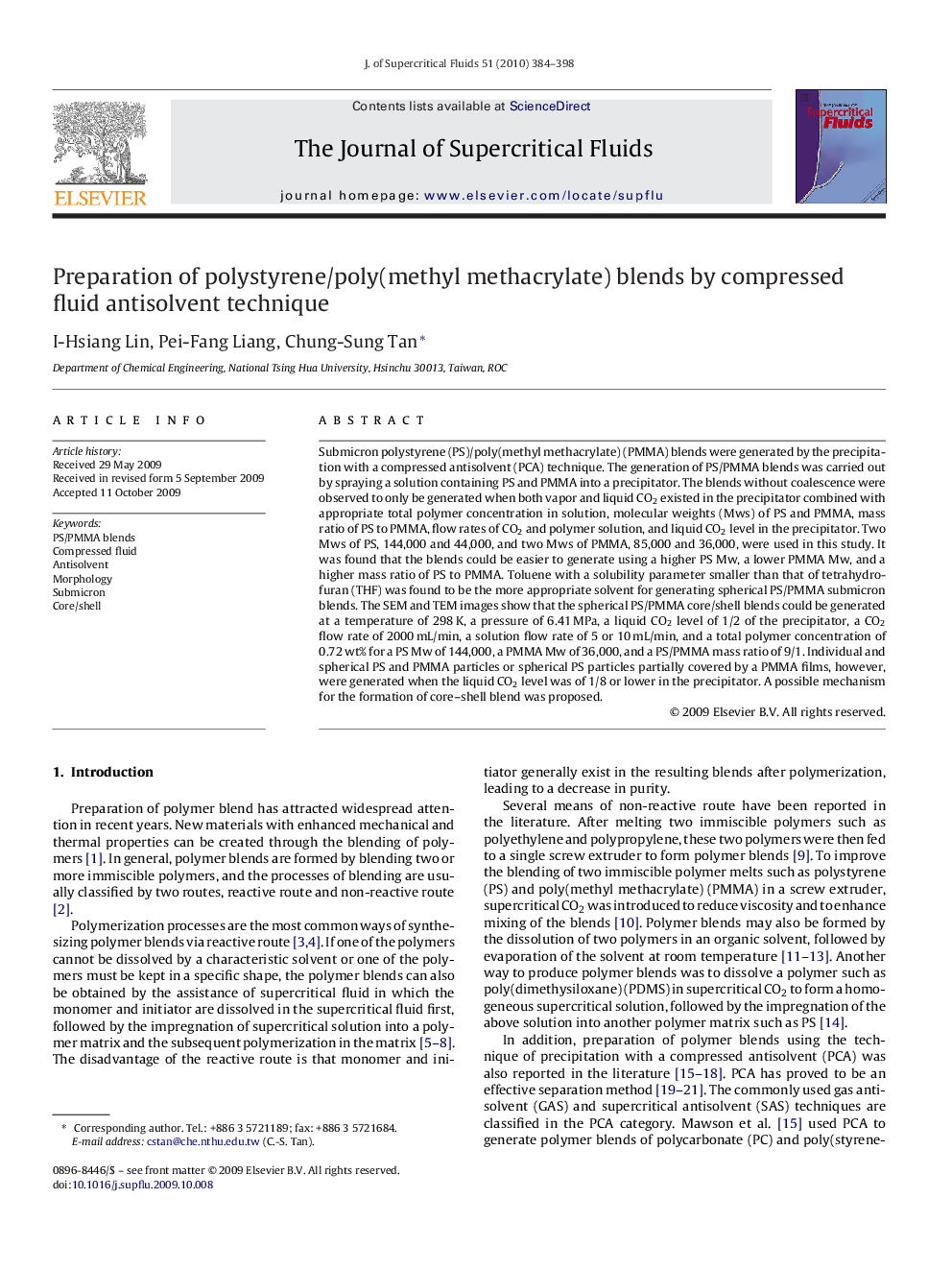| کد مقاله | کد نشریه | سال انتشار | مقاله انگلیسی | نسخه تمام متن |
|---|---|---|---|---|
| 231613 | 1427438 | 2010 | 15 صفحه PDF | دانلود رایگان |

Submicron polystyrene (PS)/poly(methyl methacrylate) (PMMA) blends were generated by the precipitation with a compressed antisolvent (PCA) technique. The generation of PS/PMMA blends was carried out by spraying a solution containing PS and PMMA into a precipitator. The blends without coalescence were observed to only be generated when both vapor and liquid CO2 existed in the precipitator combined with appropriate total polymer concentration in solution, molecular weights (Mws) of PS and PMMA, mass ratio of PS to PMMA, flow rates of CO2 and polymer solution, and liquid CO2 level in the precipitator. Two Mws of PS, 144,000 and 44,000, and two Mws of PMMA, 85,000 and 36,000, were used in this study. It was found that the blends could be easier to generate using a higher PS Mw, a lower PMMA Mw, and a higher mass ratio of PS to PMMA. Toluene with a solubility parameter smaller than that of tetrahydrofuran (THF) was found to be the more appropriate solvent for generating spherical PS/PMMA submicron blends. The SEM and TEM images show that the spherical PS/PMMA core/shell blends could be generated at a temperature of 298 K, a pressure of 6.41 MPa, a liquid CO2 level of 1/2 of the precipitator, a CO2 flow rate of 2000 mL/min, a solution flow rate of 5 or 10 mL/min, and a total polymer concentration of 0.72 wt% for a PS Mw of 144,000, a PMMA Mw of 36,000, and a PS/PMMA mass ratio of 9/1. Individual and spherical PS and PMMA particles or spherical PS particles partially covered by a PMMA films, however, were generated when the liquid CO2 level was of 1/8 or lower in the precipitator. A possible mechanism for the formation of core–shell blend was proposed.
Figure optionsDownload as PowerPoint slide
Journal: The Journal of Supercritical Fluids - Volume 51, Issue 3, January 2010, Pages 384–398